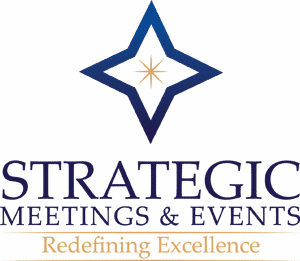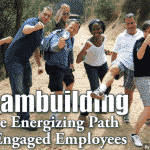Anatomy of a Meeting Planner
By James S. Rota and Christy Lamagna, CMP, CMM, CSTM
If you like adrenaline rushes, working under pressure, making the impossible happen and doing it all on five hours of sleep with not much more than a granola bar you ate standing up sometime within the past 24 hours, welcome to the wonderfully exciting, unpredictable, rewarding world of an event and meeting planner.
Did you know that as recently as three decades ago, a career as a meeting planner was not considered a “real” profession? Sure, meetings and conferences were held, and people were paid to plan them, but the industry as we know it today did not exist. Over the years, the industry has taken shape and has become a thriving career choice for ambitious, energetic people worldwide. Industry certifications have been created, adding credibility to the field, and colleges around the country have been adopting meeting, event and hospitality degrees and certifications to their curriculums.
According to the Federal Bureau of Labor Statistics, “Employment of meeting and convention planners is expected to grow 16 percent over the 2008-18 decade, faster than the average for all occupations. As businesses and organizations become increasingly international, meetings and conventions become even more important.”
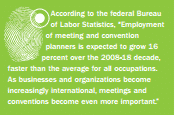 The American meetings and events industry, directly and indirectly, supports 6.3 million jobs, generating almost $1 trillion a year in direct, indirect and induced spending. The industry’s direct $106 billion contribution to the U.S. GDP is greater than the amount generated by auto manufacturing ($78 billion); performing arts, spectator sports and museums ($71 billion); and information and data processing services ($76 billion). If indirect and induced spending numbers are included, meeting and event production’s total annual contribution to the GDP is $458 billion. These findings are part of a study titled “The Economic Significance of Meetings to the U.S. Economy,” conducted by PricewaterhouseCoopers and commissioned by an alliance of 15 travel, meeting and hospitality organizations.
The American meetings and events industry, directly and indirectly, supports 6.3 million jobs, generating almost $1 trillion a year in direct, indirect and induced spending. The industry’s direct $106 billion contribution to the U.S. GDP is greater than the amount generated by auto manufacturing ($78 billion); performing arts, spectator sports and museums ($71 billion); and information and data processing services ($76 billion). If indirect and induced spending numbers are included, meeting and event production’s total annual contribution to the GDP is $458 billion. These findings are part of a study titled “The Economic Significance of Meetings to the U.S. Economy,” conducted by PricewaterhouseCoopers and commissioned by an alliance of 15 travel, meeting and hospitality organizations.
Many outside the field imagine that our days are full of glamorous travel, parties and five-star hotel accommodations, but those in the field know there is a tremendous amount of work and responsibility behind every program. What we do takes talent, dedication, creativity and a relentless commitment to delivering a successful experience. We sacrifice nights, weekends, family gatherings and our social lives to make sure things get done right. Event and meeting planners are the people behind the curtain making everything happen.
The next time you work a program, realize that you are wearing the badge of honor. It’s that peel-off, self-adhering label or plastic case attached to a lanyard that announces your name and your event planner title to the world.
Think about all the subtitles that come with being a planner. We are magicians — for magically making budgets work. We are problem-solvers because we find solutions for every challenge we encounter. We are negotiators because we are tasked with reading and understanding the many contracts we must address.
Add to the list relationship counselor, interior designer, stylist, miracle worker, dietician, juggler, motivator, mediator, travel agent, and our favorite, prophet, because we must be able to see into the future and predict the outcome of all that’s been planned!
Case study: Creating an eco-friendly event

Event: Intel Developer Forum in Beijing
Organizer: Lou Cozzo (@IntelSWevents)
Goal: Reduce environmental impact and educate attendees about sustainability. “Having a successful business is not just the result of good earnings, it’s about having triple-bottom-line success by thriving in all three areas: environmental impact, social responsibility and economic benefits,” Cozzo says. “Driving sustainable events is no different than designing the next power-efficient chip. It all counts.”
Idea: Use venues and hotels with strong sustainability practices within walking distance of each other and convenient to public transportation. Install recycling bins on-site, replace water bottles with water cooler stations, use energy-efficient LED lighting during general session and hire local staff. Minimize printing, reduce water usage and reuse as many materials as possible.
Execution: Cozzo and his staff included minimum requirements for sustainable events in their RFPs and contracts. They chose the China National Convention Center, which has energy-efficient cooling and water-reuse systems in place, to host the event. Only hotels with comprehensive green policies were selected to house attendees. Pre-event communication strategies educated attendees about the importance of reusing hotel linens to reduce water usage and instructed them to recycle conference badges as well as bottles, paper, cardboard, wood and carpet on-site. Reusable “pod” booths were compacted before shipping to reduce carbon emissions, and staging was reused throughout the event.
Result: Using local equipment saved 103 tons of carbon emissions (equal to taking 21 cars off the road for a year). Using water coolers saved the equivalent of 83,200 cups of tea. All told, the event recycled 2,000 pounds of waste, which is equal to the weight of six giant pandas. “The misconception today is that it costs more to implement a green event,” Cozzo says. “Being green is all about being smarter about how you plan your event. Break the status quo and try something different. Your audience will notice, and it will be good for your reputation and the planet.” PYM would like to thank Meeting Professionals International and writer Ian Whiteling for sharing this case study with us. For more CSR case studies, visit mpiweb.org.
DITCH YOUR BINDER AND EMBRACE THE iPAD
Any event professional will tell you that the binder they carry on-site is their lifeline. It’s key to remaining organized and getting the job done. As a CMP and CMM who’s worked as an event planner for 13 years, I have organized small and large events. Currently, I work on an annual event that lasts five days and has more than 9,000 attendees, so you can imagine how big my binder gets. This got me to thinking about how I could use an iPad in place of my binder to save paper, money and — quite literally — my back. By Stormi Boyd, CMP, CMM
 When asked, most event professionals say they could not survive without their binders. They feel paper is faster and more reliable. The benefits of using an iPad, however, are both logistical and economical. The less you print, the more environmentally friendly you become. And the more money you save.
When asked, most event professionals say they could not survive without their binders. They feel paper is faster and more reliable. The benefits of using an iPad, however, are both logistical and economical. The less you print, the more environmentally friendly you become. And the more money you save.
Don’t believe me? Let’s convert this idea into numbers. One document I use is 24 pages, which had 34 versions. If I printed this document 34 times, I’d have 816 pages. A ream of paper is 500 pages. It takes about 0.6 percent of a tree to generate one ream of paper. Let’s say there are 11 people on my events team who printed this 24-page document 34 times. That’s 8,976 printed pages, or 16 reams of paper, or one entire tree.
A ream of paper costs, on average, $7.50. Multiply that by the 16 reams of paper we just used, and you can see that we’d save $120 by NOT printing one document and all its permutations. Think of all the money and paper you’d save if you made this switch with your entire binder.
Afraid that finding something on an iPad will be slower than using your binder? I have found that I not only save time by using my iPad, but that this technology is very reliable. How many times have you written something important on a Post-it note and then lost it? Yep, it’s happened to all of us. With the “notes” features on an iPad, you can jot a quick note (or speak it), then email it to yourself, a vendor or team member. No more lost scraps of paper!
There are literally thousands of applications available to do just about anything you need. A partial list of the ones I use include:
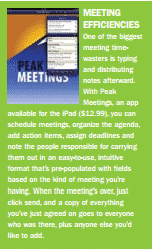 Quick Office — View, create, and edit office documents.
Quick Office — View, create, and edit office documents.- Evernote — Take notes and put them into folders with the ability to email.
- Dropbox — Allows storage of documents in a single “folder” accessible from any device.
- Reminders — To-do lists (comes with the iPad).
- Iannotate pdf — For signing contracts, changing diagrams, putting notes on documents and PDFs.
- Flight Aware — Track flights of VIPs /presenters to see if they have arrived or been delayed.
There are many more that you might find useful, so don’t be afraid to experiment and ask your industry friends what works for them.
The technology is constantly evolving. Imagine what might be developed for us once meeting planners embrace the technology. I’d love to see an app that uses the iPad’s camera to show you in real time how a ballroom would look with a classroom set, or banquet rounds, or how a certain screen size works in a room. This type of interactivity is coming and it’s coming soon.
Now ask yourself this question: Can your paper binder do that?
As a meeting planner, you’ll learn the planning process has many components. The irony is that a meeting planner spends most of their time re-planning, un-planning and contingency planning because so much changes along the way. One of the most important things to remember is that no matter how perfectly it looks on paper, it won’t turn out exactly as you’ve imagined. It never does and that’s OK. What’s critical is that we remain flexible and continue to adjust each step of the way.
Sometimes the changes are easy to navigate and, although unexpected, make for a better program. Other times, Murphy’s Law takes over and it’s our job as a meeting planner to manage the chaos and keep things moving forward no matter what.
Consider this example. We once had a welcome reception beach party planned for a large program in Miami. The weather forecast was sunny, warm and bright. The décor had been designed down to the placement of throw pillows on the outdoor furniture and where the shells would be scattered on the buffet tables. The morning of the event, the design team sprung into action. Palm trees were lit, furniture was placed. We even had people “combing” the beach to make sure our sand was pristine and perfect. And then an unexpected guest joined us: Mother Nature. She brought some of her best friends: dark clouds, chilly breezes and rain. We had two hours before the party was to begin and we had to scramble.
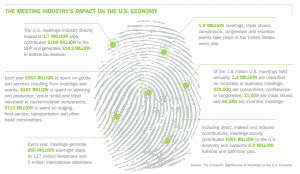 You can’t bring a chaise lounge indoors, nor can you take the fire pit we were to grill food on into the hotel, so not only did we have to change décor, we had to change the menu. Our ballroom could not be broken down quickly enough to host the event, so we found ourselves transforming the pre-function space on the fly.
You can’t bring a chaise lounge indoors, nor can you take the fire pit we were to grill food on into the hotel, so not only did we have to change décor, we had to change the menu. Our ballroom could not be broken down quickly enough to host the event, so we found ourselves transforming the pre-function space on the fly.
Thankfully we had a network of wonderful vendors and a strong relationship with each of them. The florist came in and redesigned the flowers. The decorator arrived with new furniture, and the chef redesigned the menu, how it would be served and where it all would be placed. The event bore no resemblance to what we had spent months creating. We went from a stylish beach party to a sophisticated, Asian-inspired cocktail reception.
Along the way, we managed the client’s expectations, understandable disappointment and addressed the need to communicate the new plan to 180 guests. And we did it all without looking panicked. When all was said and done, the look on our client’s face when she saw the indoor redesign for the first time was of pure amazement. Knowing we pulled it off was rewarding, but seeing the client doing the rain dance as it poured outside was priceless.
If you like adrenaline rushes, working under pressure, making the impossible happen and doing it all on five hours of sleep and not much more than a granola bar you ate standing up sometime within the past 24 hours, welcome to the wonderfully exciting, unpredictable, rewarding world of an event and meeting planner.
You’ll come across many titles for what we do: conference coordinator, convention planner, special event coordinator, meeting planner, meeting manager, strategic planner, event strategist, meeting strategist, and more. Regardless of the title we hold, we all share some basic characteristics that make us successful. If you are considering a career in meeting planning, or find that you have been tasked with planning meetings in addition to your other duties, prepare for a wonderful adventure!
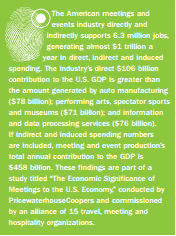 Not sure if you’re right for this field? If you see your skills in this list, you are off to a great start to becoming a meeting planner: desire to please people and make things happen; natural multitasker; problem solver; creative thinker; ability to lead others and work well in a team; flexible and open-minded; calm under pressure; clear, concise communicator in both the spoken and written word; ability to visualize and then create a concept; not afraid of a challenge; and a desire to work hard.
Not sure if you’re right for this field? If you see your skills in this list, you are off to a great start to becoming a meeting planner: desire to please people and make things happen; natural multitasker; problem solver; creative thinker; ability to lead others and work well in a team; flexible and open-minded; calm under pressure; clear, concise communicator in both the spoken and written word; ability to visualize and then create a concept; not afraid of a challenge; and a desire to work hard.
Not all planners have all these skills and there are many other traits that make up the profile of a meeting planner. Regardless of where you’re at in your planning career, there are a few eternal truths that you need to know and follow without fail. Some may come naturally, some may take practice, but all are essential to your career advancement.
Here’s a little meeting planner parting advice:
Don’t be afraid to ask questions. Make sure you ask the right ones, as well. Ask open-ended, thought-provoking questions. The more you know, the deeper your curiosity becomes. Ask. Learn. Ask something else. Each time you ask, you are expanding your knowledge base. The answers are the solid foundation upon which your event will be built.
Communication is key. So many of our interactions are with people we don’t meet until we get on-site and much of the information we exchange is done electronically. It’s crucial to be specific when stating what you need, describing your vision and following up on details. It’s also important to pick up the phone and talk to people when you can. Email is convenient. Live conversation builds relationships.
Checklists and timelines are critical. You need to create and use a definitive and specific set of checklists, timelines and recaps to guarantee that all parties are moving forward, aware of deadlines and up to date on event details. The more that is written down and recorded, the more likely the event will be successful.
Network. Talk to everyone. Listen to their stories, offer assistance where you can and stay connected with as many people as possible. Use an online networking agent like LinkedIn to connect and build your network. No matter how many people you know, you can always benefit by knowing more.
Work with others. No meeting planner can do it alone. You need to rely on the network you’ve built. Rely on it for support and be willing to lend your talents where needed. Surround yourself with others who are at the top of their game. Your support team can bring a fresh perspective on each member’s area of expertise. In planning, the whole is almost always greater than the sum of its parts. Collaborate!
Be flexible. Once you make a plan and have it almost perfect, get ready to change it. And change it again. If you cling to your original plan, you won’t succeed. “Shift happens” and you have to shift right along with it as a meeting planner.
Stay current. Never stop learning. Knowledge is power. Attend seminars. Earn industry certifications. Subscribe to industry-related media. As a meeting planner always be on the quest for innovation in each area of the planning process. Use these tools to set trends and reinforce your reputation as an authority.
Be honest. Be true to your values and your company’s values and never lose sight of either. Some situations are black and white and easy to navigate. Others are gray. Taking gifts for bringing a piece of business to a hotel that otherwise would not have earned it, is always the wrong thing to do and easy to identify as inappropriate. What if you are offered a family trip to a country that you know nothing about, but know your company or client will never visit? That’s when you need to do a gut check. The bottom line: if your boss was standing next to you, what decision would you make? Let that be your compass, and you likely won’t go wrong.
Give back. Lend your talents to an organization of your choice. Giving back is beneficial — and not just for the recipients. Research has shown that the adage, “It’s better to give than to receive” is true. With time, giving back will establish you as a true professional with sound ethics. There are few things more rewarding than being recognized in the industry as a leader, a motivator and someone who can be trusted.
Tags: Anatomy of a Meeting Planner, Meeting Planner, Event Planning, Strategic Events, Strategic Planners, Corporate Meetings, Corporate Events, Strategic Events, Plan Your Meetings
